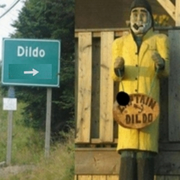|
TorpedoFish posted:Okay here's an actual effort post, because I don't think we've talked about the world's worst-ever industrial disaster… Heart-wrenching, infuriating, and informative. None of us will ever surpass Droog but you did do an amazing job!
|
|
|
|

|
| # ? May 19, 2024 10:37 |
|
TorpedoFish posted:Okay here's an actual effort post, because I don't think we've talked about the world's worst-ever industrial disaster here! I'm not as good a writer as Droogie I maintain that I'm no writer, but I realize there is mounting evidence I'm lying, probably to myself. I just want to share weird and horrific things that interest me, especially about my state. I love this thread and only started putting stuff up because I liked reading what other people contributed. TorpedoFish posted:There was a delay in closing the plant, as the only safe way to get rid of the remaining MIC on site was to process it into the end product. I cannot wrap my head around the tonnage of an aerosolized thing. Especially to the degree that was released. Do you have any idea what the cleanup entailed? How do you reliably capture a gas/aerosol even if it's heavier than air once it's escaped containment into the open air? I can't picture it, especially since it must be constantly moving from air currents and other disturbances.
|
|
|
|
quote:I cannot wrap my head around the tonnage of an aerosolized thing. Especially to the degree that was released. Do you have any idea what the cleanup entailed? How do you reliably capture a gas/aerosol even if it's heavier than air once it's escaped containment into the open air? I can't picture it, especially since it must be constantly moving from air currents and other disturbances. In the immediate term, the only way to deal with an outdoor gas leak like that is to stay out of the area until the concentration of gas drops. I don't know about the chemistry of whether MIC precipitates out of the air or just disperses: after the leak people were told it was safe to eat crops and (surviving) livestock from in the area, but to avoid locally caught fish. It actually disperses fairly quickly assuming normal atmospheric conditions, though I don't know the timeline (I could do a write-up about some awful incidents where there were not normal environmental conditions and smog became lethal). Pragmatically, a lot of people were uncomfortable returning to their homes, eating off plates, and sleeping on beds that had been so exposed. As for the plant site itself, after they processed the remaining MIC, remediation efforts were hampered by ongoing litigation for years, and (in my opinion) corporate negligence by UCC. My read on it is that the Indian and Madhya Pradesh governments would like UCC to clean up the mess they made, while UCC consistently denies any and all responsibility for it. UCC has their side of the story here , but I recommend taking it with a grain of salt. As an entirely anecdotal note, I was called for jury duty a couple years for civil court. I was working on my MPH at the time and was taking a course about environmental health and the law. I got shortlisted for, of all things, an individual toxic exposure suit against UCC. We were asked if any of us were familiar with UCC. I said I was. The UCC lawyer asked in what context. I said "Well, I'm studying public health and currently taking an environmental health course," and at that point I think he'd already made up his mind. I continued, "And in the last environmental health class I took, we talked about Bhopal..." He literally didn't even let me finish my sentence. Thank you for your time, please leave, the clerk will give you your piece of paper.
|
|
|
|
TorpedoFish posted:(I could do a write-up about some awful incidents where there were not normal environmental conditions and smog became lethal). Holy poo poo, yes please.
|
|
|
|
just finished reading Isaac's Storm by Erik Larson about the Galveston Hurricane of 1900. It remains the deadliest natural disaster in US history, with 8000-12000 fatalities. https://en.wikipedia.org/wiki/1900_Galveston_hurricane
|
|
|
|
DemonDarkhorse posted:just finished reading Isaac's Storm by Erik Larson about the Galveston Hurricane of 1900. It remains the deadliest natural disaster in US history, with 8000-12000 fatalities. Yeah, I picked it up after a recommendation in this thread (I think?) and it's a great read.
|
|
|
|
Part of the reason Galveston was so impacted because another port city, Indianola, had been flattened in a pair of hurricanes, one in 1875 and the one that destroyed it in 1886. The 1886 Indianola hurricane is still considered one of the most intense to ever hit the United States. The 1875 hurricane killed at least 800.
|
|
|
|
TorpedoFish posted:In the immediate term, the only way to deal with an outdoor gas leak like that is to stay out of the area until the concentration of gas drops. I don't know about the chemistry of whether MIC precipitates out of the air or just disperses: after the leak people were told it was safe to eat crops and (surviving) livestock from in the area, but to avoid locally caught fish. It actually disperses fairly quickly assuming normal atmospheric conditions, though I don't know the timeline (I could do a write-up about some awful incidents where there were not normal environmental conditions and smog became lethal). . Ooh could you write about the London smogs of the 50s? That time it got really bad?
|
|
|
|
In 2004 a member of a British comedy/prank/activist group called The Yes Men managed to pose as a spokesperson for Dow Chemical and the company share price dropped and they hurriedly put out a press release denying they would do the right thing. https://en.m.wikipedia.org/wiki/The_Yes_Men
|
|
|
|
HopperUK posted:Ooh could you write about the London smogs of the 50s? That time it got really bad? Sure, I'll try and get that up today or tomorrow.
|
|
|
|
Varkk posted:In 2004 a member of a British comedy/prank/activist group called The Yes Men managed to pose as a spokesperson for Dow Chemical and the company share price dropped and they hurriedly put out a press release denying they would do the right thing. https://en.m.wikipedia.org/wiki/The_Yes_Men “On April 28, 2005, at a London banking conference to which they had accidentally been invited because of their fake Dow website, ‘Dow representative’ Erastus Hamm unveiled an ‘Acceptable Risk’ calculator for determining how many deaths are acceptable when achieving large profits. The bankers enthusiastically applauded the lecture, in which ‘Hamm’ pondered whether some huge industrial crimes—including the Bhopal catastrophe and IBM's sale of technology to the Nazis for use in identifying Jews—were ‘golden skeletons,’ i.e. lucrative and acceptable skeletons in the closet. Several of the bankers in attendance then signed up for licenses for the ‘Acceptable Risk Calculator’ and even posed with Acceptable Risk mascot ‘Gilda, the golden skeleton in the closet,’ for photos.”
|
|
|
|
Jesus christ. On a lighter note, I stumbled across a truly harrowing cave exploration story with a less grim ending than they usually have. https://www.nationalgeographic.com/adventure/article/flood-escape-deepest-cave-veryovkina-abkhazia Still very unnerving! Also interesting to read about the deepest cave in the world. If NatGeo is paywalled for you, this youtuber sticks really close to the Nat Geo story, but reads it very engagingly. He adds on a slightly more depressing incident story after telling the the flood story, at the end.https://www.youtube.com/watch?v=kNvfJYPYO60
|
|
|
|
Busket Posket posted:“On April 28, 2005, at a London banking conference to which they had accidentally been invited because of their fake Dow website, ‘Dow representative’ Erastus Hamm unveiled an ‘Acceptable Risk’ calculator for determining how many deaths are acceptable when achieving large profits. The bankers enthusiastically applauded the lecture, in which ‘Hamm’ pondered whether some huge industrial crimes—including the Bhopal catastrophe and IBM's sale of technology to the Nazis for use in identifying Jews—were ‘golden skeletons,’ i.e. lucrative and acceptable skeletons in the closet. Man I wonder why holocaust denial and big tech and old money go hand and hand and hood ah well what a mystery
|
|
|
|
The tragedy of the Yes Men is that bankers have no shame.
|
|
|
|
Air pollution has been around for longer than many people realize - as long as we’ve been making fires we’ve been dealing with it. Often the most serious air pollution events are due to a combination of both human and natural factors: pollutants are a problem, yes, but the wrong atmospheric conditions can dramatically increase the concentration in a given area. London is prone to the wrong atmospheric conditions: it’s cool and damp and naturally prone to fog. The first-ever book on air pollution was actually written as a letter to the king regarding the air quality in London in the 1600s, and as the city grew and the industrial revolution chugged on, things just got worse. In December 1952, the Great Smog killed probably 10,000 Londoners. That December had been particularly cold, which meant that people had been burning more coal in a shorter period of time. The coal burned in London (and the rest of the UK) at that time tended to be very low-quality, as part of the UK’s plan to repay their debts from WWII was exporting a huge percentage of their high-quality, cleaner-burning coal. The housing stock in London was extremely poor, meaning many, many people lived in poorly-insulated, drafty homes; many would keep a stove or heater going overnight by pouring coal dust on it. Additionally, war-related steel shortages had led London to abandon their electrified tram network and replace those routes with diesel buses. The train system was beginning to be electrified, but many of the long-distance trains coming in and out of London still relied on steam locomotives. On December 4, an anticyclone (which is not a storm like a cyclone) formed above London, which led to what’s known as a temperature inversion. Normally air is cooler the higher up in the atmosphere, and the warmer air near the surface slowly rises and cools as it does so. When there’s an inversion, something like an anticyclone brings a ‘cap’ of warm air in at a high altitude over an area and keeps it there, trapping a plug of stagnant cooler air beneath it. The trouble became obvious on the 5th, and it came on quickly. London woke to a thick, swirling gray smog covering the inner city, thicker and darker than anyone had seen before. And for four days, as Londoners attempted to go about their lives and stay warm, the smog grew thicker and thicker, and more and more toxic. As things grew worse, the inner boroughs of London ground to a halt. The Underground kept running, but street traffic ground to a halt – which had the effect of letting the smog thickening even more, as there was little movement to disturb the air. Visibility was reduced to one foot; people found themselves getting lost in their own neighborhoods. The smog was so thick it worked its way through cracks and gaps and doors and windows into buildings. Cinemas and theaters closed, because the audience couldn’t see the screen through the smog. One doctor working at a hospital in central London recalled the smog leaving so much dark particulate matter inside the hospital that he was able to write his name in the soot settled on the basin of a sink. People didn’t panic – Londoners were used to poor air, and this was London that wasn’t far removed from the terror of the Blitz. There were trumped-up reports of crime sprees, but there’s little evidence that that actually occurred. By and large people did what they could, which was try and wait it out. Those who could find their way through the blanketing darkness to stores bought any sort of gauze smog mask they could find. Others used scarves and shawls to cover their mouths and noses, even indoors. The hospitals were busy. By the end of the first day, most hospital beds were full, and then ambulances stopped coming. It wasn’t possible for them to navigate the streets, and there were no hospital beds available anyway. As with most environmental disasters the most vulnerable were the ill, the elderly, and the very young. Older men seemed particularly vulnerable, filling up the hospitals early on: in a particularly cruel twist, many veterans of WWI who had survived exposure to gas attacks in battle succumbed to the toxic air in their own home, and doctors could do nothing to help them. As particulates and irritants like sulfur dioxide were drawn into lungs, the body responded by constricting airways. The damage caused by the smog led to an increased vulnerability to infection. When there is an infection in the lungs, the lungs can fill with fluid. Hundreds and thousands of people choked to death on their own lungs. By the end of the first day, at least 500 people had died in hospitals around London. Morgues were overflowing, but nothing could be done about it. And then, on December 9, a sudden breeze swept through London, and the smog dissipated just as fast as it had settled. Deaths likely attributable to the smog continued for weeks and months and years after that week in December. It’s impossible to say for sure how many premature deaths were caused by the smog: the official government estimate puts it at 4,000 - 10,000, but it’s widely accepted that 10,000 is likely a very low estimate. Death rates remained elevated for months into 1953, and there’s strong evidence that that was not due to an influenza outbreak, as the government claimed, but due to complications from the smog. The silver lining from this tragedy was that it was a wakeup call with regard to air pollution, and the factors contributing to it. City and national legislation was passed aiming to reduce air pollution. The city rolled out incentives to modernize housing stock and, more importantly, domestic heating systems. Progress was slow, but as little had been done before to improve air quality, it’s difficult to imagine what might have happened had efforts not started when they did.
|
|
|
|
Thanks for this. It was a really interesting read. I had no idea London was having smog problems as recent as the 1950s. When I think of the smoggy London setting, I always think of the victorian period.
|
|
|
|
Varkk posted:In 2004 a member of a British comedy/prank/activist group called The Yes Men managed to pose as a spokesperson for Dow Chemical and the company share price dropped and they hurriedly put out a press release denying they would do the right thing. https://en.m.wikipedia.org/wiki/The_Yes_Men The most important takeaway from this is that the developer who was fired by Maxis for inserting a secret level/area in SimCopter in which men in pink speedos kiss is doing just fine.
|
|
|
|
drat, TorpedoFish, these are terrifying and fantastic. I like your recounting of these horrors a hell of a lot.
|
|
|
|
Velocity Raptor posted:Thanks for this. It was a really interesting read. I had no idea London was having smog problems as recent as the 1950s. When I think of the smoggy London setting, I always think of the victorian period. London fogs are usually associated with the 19th century - especially crime, horror and detective novels - but they'd been around for centuries. As TorpedoFish mentioned, London is naturally prone to 'real' fog and because the city has run on imported coal for most of its recorded history - people have been complaining about the air quality in London since at least the 1300s. The last serious 'pea souper' fog in London was in 1962 - a decade after the Great Smog and despite the passage of the Clean Air Act. The smogs largely went away during the 1970s and now central London doesn't even get much fog, due to the urban heat island effect, although Heathrow airport is still very prone to it. My grandfather was born in and lived and worked in London and had a lot of stories about the Great Smog - he was lucky enough to live in a leafy suburb in the south west of the city, so was out of the worst of it, but his work often required him to go to the Shell-Mex Building right in the centre. He remembered the bus conductor having to walk in front of his bus, one foot pressed against the kerb to find his way and shining a torch back for the driver to follow, just a few feet behind. Then the buses wouldn't run, so he took the train - the service was reduced to about a half of what it usually was and they were using explosive detonators to signal to the drivers because they couldn't see the actual signals. He said that the key difference between a fog and a pea-souper was that a fog stayed outside, but a pea-souper was more like a liquid - it followed you around, stuck to your clothes, swirled when stirred up by moving people or vehicles, or if you opened a door, and covered everything with a tangible greasy layer of soot. Unlike an atmospheric fog, it got inside buildings - you could see little sooty 'fingers' traced on ceilings and walls around badly-fitting windows and doors or open vents, and sometimes you could notice it travelling up or down staircases in the internal air drafts until it filled the space. It genuinely sounds like something from a horror movie.
|
|
|
|
Thanks for that write up! My mum was born in London in 1957 and she remembers some really impressive fogs when she was a child. Nowadays we rarely see fog at all.
|
|
|
|
When I was a kid the buildings in London were still black with soot from the coal fires. Over the last 30 years that's mostly been cleaned off.
|
|
|
|
Rascar Capac posted:When I was a kid the buildings in London were still black with soot from the coal fires. Over the last 30 years that's mostly been cleaned off. The famous black frontage of 10 Downing Street isn't intentional - like most buildings of its era in London it's made of yellow clay brick. But the atmosphere first dulled the colour as the porous bricks absorbed all the sulphur and other nasties, then the outside was covered in a layer of soot, dirt and tar. It appeared that way for so long in all the famous photos and news footage that the bricks were cleaned and then painted black to match.
|
|
|
|
Rascar Capac posted:When I was a kid the buildings in London were still black with soot from the coal fires. Over the last 30 years that's mostly been cleaned off. I remember up to about 20 years ago if you spent the day in London, when you blew your nose the stuff would be black with dust and soot. Not like that now.
|
|
|
|
Smog talk makes me think of the air pollution problem in Sudbury, Ontario. When the mines were first operating in the late 1800s and early 1900s, they smelted ore by burning it over huge "roasting yards" of wood. This was to separate the pure nickel and copper from the sulphur that was mixed with the raw ore. This of course resulted in the burned-off sulphur mixing with the wood smoke and covering the area in a thick, acrid smog. Acid rain was common. Almost all of the plants near the mines died, and it threatened crops in the surrounding areas. It also left black stains on all the rock in the area, which you can still see today. There are places where you can tell that the soil level around the rocks is lower than before, or part of the rocks have been blasted away, because of the sudden colour change. But what made me think of it was how you described the fog so thick that you couldn't see a few feet ahead of you. In Copper Cliff, the town closest to the mines and the roasting pits, that was a frequent occurrence. Whenever the fires were burning, the smoke would descend over the town and you wouldn't be able to see your hand if you held out your arm in front of you. The sidewalks even had railings running along them so you could guide yourself when walking through the streets. quote:There was, it said, “scarcely a plant … not … affected by the deadly fumes.” Indeed, trees appeared in the summer as if “visited by a heavy frost.” A former resident of the company town that developed near the O’Donnell roast yard later recalled his childhood: “There were days when I could not see my hand in front of my face … I got lost one day walking the fifty yards to school. Needless to say, we had no gardens—there wasn’t as much as a blade of grass growing in the village.” Eventually, the main polluter (Inco - now Vale) built a huge smokestack in the 1970s and more modern smelting facilities. The "Inco Superstack" is the second tallest building in Canada (second to the CN Tower) and shunted all our smog into the jetstream to let the rest of the world deal with it. Since then, Sudbury has been a real champion of re-greening policies. They've bounced back from the barren, smoggy wasteland of a century ago, and now Sudbury has some of the best air quality in the province. The land is still scarred from the mines. There are slag heaps where trains still dump the remains of the smelting process, toxic tailings ponds dot the landscape with their unnaturally bright waters, and the aforementioned black rocks are still stained with soot and acid rain. But the trees have returned, and the air is clean, and there are continuing efforts to keep reducing the harm that the mines cause for future generations.
|
|
|
|
Somewhere I have a book called "The Handbook of Unusual Natural Phenomena" that was a bunch of old reports of strange weather. I know there were some fog stories in there and when I find it I will post some. In the meantime here are a couple little fog stories from my favorite weird history website Futility Closetquote:
quote:“The Hartford Times tells a curious story of a flock of crows in that vicinity who recently lost their way in a fog. They lost their bearings at a point directly above the South Green, in Hartford. For a good while they hovered there, coming low down, circling and diving aimlessly about, like a blindfolded person in ‘blind man’s buff,’ and keeping up a hoarse cawing and general racket beyond description. It was plain enough that of the entire company each individual crow was not only puzzled and bothered, but highly indignant, and inclined to utter ‘cuss words’ in his frantic attempts to be heard above the general din, and tell the others which way to go. Once or twice the whole flock swept down to a distance of not more than one hundred feet above the street. Finally, after going around for many times, they saied away in a southerly direction, evidently having got some clue to the way out of the fog, or desperately resolved to go somewhere till they could see daylight.” quote:The Paris fogs of the 1780s are described in Louis-Sébastien Mercier’s Tableau de Paris (Chapter CCCLXIV, 1:1014), a 12-volume topographic description of the city that appeared between 1782 and 1788, as quoted in Jeremy Popkin, ed., Panorama of Paris: Selections From Tableau de Paris, 2010. “I have known fogs so thick that you could not see the flame in their lamps,” Mercier wrote, “so thick that coachmen have had to get down from their boxes and feel their way along the walls. Passers-by, unwilling and unwitting, collided in the tenebrous streets; and you marched in at your neighbour’s door under the impression that it was your own.”
|
|
|
|
Thank you, TorpedoFish, your write ups are amazing!
|
|
|
|
My favourite Sudbury fact is that the region's ore bodies and fertile soil are the result of an asteroid strike 1.8 billion years ago! The impact crater is 130 km in diameter, the third-largest on Earth behind the Chicxulub crater in the Yucatan and the Vredefort impact structure in South Africa.
|
|
|
|
CHIMlord posted:My favourite Sudbury fact is that the region's ore bodies and fertile soil are the result of an asteroid strike 1.8 billion years ago! The impact crater is 130 km in diameter, the third-largest on Earth behind the Chicxulub crater in the Yucatan and the Vredefort impact structure in South Africa. Mine is that there are 330 lakes within the city limits.
|
|
|
|
oops I just wrote like 3000 words about Love Canal, the fun thing about studying public health is the nightmares of the past present and future are just unending Throughout the first half and some of the 20th century, development along the Niagara River in northwestern New York was booming. A dual expansion of industry and railroads resulted in a significant increase in population, and increased ease of travel saw an ever-swelling number of tourists coming to visit the falls and beautiful lakesides in the area. The trend wasn’t strictly and smoothly upwards, of course: like anywhere, there’d been booms and busts. One of the busts in the 1890s had been a canal that would’ve bypassed Niagara Falls, creating an easy shipping lane between Lake Erie and Lake Ontario. The funding for the canal ended up falling through, a law was passed banning diversion of water from the Niagara River, and in the end only one mile of the canal was dug, upstream of the falls and to the east of the town of Niagara Falls. The gentleman behind this failed project was an entrepreneur named William Love, and even after he’d called it quits, the dug-out area became known as Love Canal. The aborted canal was between ten and fifty feet deep, and around the turn of the century it became a neighborhood swimming hole. As the city of Niagara Falls continued to grow, the city began to use the site as a municipal dump around 1920. Some industrial waste was dumped there, as was typical for the era (the idea of “hazardous waste” was still basically being developed), but nothing terribly concerning. No doubt it was a loss to the local kids, but overall the local impact wasn’t terribly significant. But again, progress and capitalism marched ever forward. Starting in the early 1940s, there was dramatic growth in chemical processing and manufacturing in the area, which produces some distinctly nasty waste. In 1942, a company called Hooker Chemical got the rights to use the site as a dump for chemical waste. Like many chemical companies, Hooker was beginning to produce more and more different chemicals. One of their biggest lines was thiols, which is a group of chemicals that are widely used in production of rubber; in the 50s they also expanded into plastics manufacturing. They lined the Love Canal dump site with clay, and in went tens of thousands of tons of industrial waste. Some was in drums metal drums, some was in other containers, some was just dumped as-is. In 1948, the city stopped using the site, and it was solely owned and used by Hooker Chemical. By 1952, the site was nearly at capacity, and the city’s expansion was bringing more and more housing near the site. Hooker stopped using the site, sealed it with a clay lid (a common way of ‘sealing up’ a dump site), and buried the whole mess. It’s important to realize here that, in the 1950s, there really wasn’t much thought given to hazardous waste. Heavy industry plants across the country routinely disposed of waste products by just putting them in the ground. If they were thoughtful about it, they bought a designated piece of land and buried steel drums full of waste. If they weren’t, they just dumped stuff, often without any container, on the ground or in the water wherever was convenient. There was no requirement to keep records of what was disposed of where to say nothing of laws about how things were disposed of. You just put it in a hole in the ground, covered it up, and that was that. The EPA didn’t exist until 1970, and even then it was six years before RCRA, the main federal legislation regarding waste disposal, would be signed into law. So while what Hooker was doing with chemical waste is shocking to modern sensibilities, there was nothing questionable about it back then. They’d bought the site as a dump site, and they were using it to dump stuff. Then the site was sold to the Niagara Falls School District. There are varying reports as to which party approached the other regarding the sale. Many reports paint Hooker as the only bad guy, saying that they approached the district and offered to sell them the site for the princely sum of $1, in order to remove themselves from ownership and any potential complications down the road. Other reports say that the school board was eyeing the property as early as 1951, when it was still being used as a dump site, and were discussing the possibilities of getting it condemned so the city could claim it. Hooker was up-front about the nature of the site from the first official document, which stated that they would need “special provisions” in the deed. Their initial proposal was that the deed stipulated the site could only be used as parkland, with no buildings on it, but the school district rejected that proposal. They were clear that any excavation or digging on the site might rupture the clay seal over the waste, which would allow chemicals to leach into the soil and groundwater. The two parties started negotiating, and in 1953, the city bought the site for $1. A clause in the contract of sale read: quote:Prior to the delivery of this instrument of conveyance, the grantee herein has been advised by the grantor that the premises above described have been filled, in whole or in part, to the present grade level thereof with waste products resulting from the manufacturing of chemicals by the grantor at its plant in the City of Niagara Falls, New York, and the grantee assumes all risk and liability incident to the use thereof. It is therefore understood and agreed that, as a part of the consideration for this conveyance and as a condition thereof, no claim, suit, action or demand of any nature whatsoever shall ever be made by the grantee, its successors or assigns, against the grantor, its successors or assigns, for injury to a person or persons, including death resulting therefrom, or loss of or damage to property caused by, in connection with or by reason of the presence of said industrial wastes. It is further agreed as a condition hereof that each subsequent conveyance of the aforesaid lands shall be made subject to the foregoing provisions and conditions. The city then immediately began building an elementary school on the site, the 99th Street School, despite knowing that they were literally on top of a toxic waste site. When they began excavations, the architect informed the school board that they’d unearthed a dump site full of 55-gallon drums of chemical waste. He explicitly said in a letter that it was a bad idea to build the school there, as, well, it was on top of a chemical waste dump. The school board responded by moving the site about twenty meters north. 400 children began attending the school in 1955. Right around when the school opened, a depression formed near the playground, about twenty-five feet across. The tops of toxic waste drums were visible where the clay had crumbled away, but the depression meant the kids had some great puddles to splash around in when it rained. Interestingly, it was Hooker who paid to have a dozen truckloads of dirt dumped to fill in the depression, not the school district. That same year, the Niagara Falls School District built a second elementary school on that same span of land, just six blocks away. They then sold off the remaining land to private developers for residential use, and the area was soon full of single-family homes and some medium-density lower-income housing. The land sold for residential use had largely been obtained by condemning nearby properties, not in the sale from Hooker, and therefore there was no paper trail to indicate the possible risks below the ground. In 1957, the City of Niagara Falls was digging in the area to put in a new sewer line. They dug through the clay cap and walls surrounding the dump site, and put in a sewer pipe on a bed of gravel. In 1960, another sewer line with similar construction again penetrated the clay lining of the dump site. The clay lining was further damaged during the construction of the bordering LaSalle Expressway, which sits between the site and the Niagara River. The Expressway also acted as a dam, interrupting the normal drainage of rainwater from the Love Canal area into the river: more water now pooled in the area. Still: the location of the neighborhood was good, and that same highway made it an excellent place to live if you were commuting into the city of Niagara Falls. It was a safe, friendly, small community with good schools and easy transportation into the city, and by the mid 1970s, almost all of the 1040 residences, including 800 single-family houses, were occupied. In 1976, Love Canal was considered one of the best places to live in Niagara Falls. Then, things fell apart. As nice of a neighborhood as Love Canal was, there were some problems from the start. Sometimes there were foul odors that couldn’t quite be traced to any clear source. Sometimes, a foul-smelling black liquid oozed into basements. Heavy rain could result in yards and playgrounds dotted with puddles that were clearly not just rainwater: they were various colors, oily, and reeked of chemicals. Residents would call the city and report these puddles, and the city would come and dump dirt on top of the puddle until it was gone. On October 3, 1976, the Niagara Gazette published what would be the first of many articles about the ongoing complaints in Love Canal, stating that chemicals from the old dump were seeping into nearby houses. This was followed by at least two more articles the following month by at least two more articles, alleging that chemicals from the same site were also being allowed to discharge into the Niagara River and that known toxins were seeping into people’s homes. For a relatively small-town paper they set out on an admirable course of investigative journalism, including paying for tests of water systems in homes themselves. In 1977, the state hired a company called Calspan to investigate the issue, and they produced a report that was published in August 1977. Their findings included:
As the city was doing nothing, a woman named Lois Gibbs was doing something. She had a son who attended kindergarten at the 99th street school, and until the first Gazette article, she had no idea that her son was attending school on top of a toxic waste dump. He was often sick and had some chronic health issues, and eventually, Lois got a note from her pediatrician recommending her son be transferred to another elementary school (perhaps one not on top of a toxic waste dump). The school board refused, because if they gave in to one parent’s demand, they would have to give in to all of them, and the school would close. In public health school, I learned about Gibbs, and my professor referred to what she did as “backyard epidemiology”. It turned out a lot of kids in Love Canal were often sick. It turned out that a lot of kids in Love Canal had chronic issues. Gibbs got enough people involved that she got the local congressman, John LaFalce, involved, and he brought the EPA to town. Once the EPA – a new organization – started investigating, the state department of health quickly followed suit. In April 1978, the state health commissioner ordered the Niagara County health department to begin an investigation. In August that same year, the state health commissioner declared a state of emergency in Love Canal. He ordered the 99th Street School closed, and the evacuation of pregnant women and children under the age of 2 from the neighborhood. Later that month, the state began buying back homes. 239 houses, the innermost two ‘rings’ of homes closest to the dump, were bought by the state. By the end of the year, at least 200 different chemicals had been identified at the site, including 200 tons of dioxin. Dioxin is a known carcinogen and teratogen. It is also a “persistent organic pollutant”: it doesn’t break down in nature, and it accumulates in fat. Usually, human exposure only comes from industrial exposure or eating food sources where it has accumulated, such as fish from polluted rivers, or gardens grown in contaminated soil; however, if it is leaking into your house, you are at extremely high risk. It turned out that, between 1974 and 1978, 56% of the babies born to families in Love Canal had some form of birth defect (the national average today is about 3%). Women in Love Canal were over three times as likely to experience a miscarriage than the general population. In 1979, a lot of things happened. Some families were temporarily relocated as they complained of chemical fumes as the city was working to try and remediate the area. More chemicals in higher concentrations were found, including 100 times more dioxin than previously identified. Chemicals were found in new locations. The 93rd Street School was also closed. Multiple environmental and medical experts recommended evacuating more families. A federal report found that the odds of someone living in Love Canal developing cancer were as high as 1 in 10. On November 6, 1978, the state of New York said that remediation work was complete, and 110 families who had been temporarily relocated could safely return home. Almost all of these families declined to return. Thousands of lawsuits were filed by everyone from homeowners through to the federal government. Everyone wanted compensation and for someone else to be held accountable. In May 1980, with hundreds of families still living in the Love Canal area, unable to afford to move, there was a meeting between two EPA officials and members of the Love Canal Homeowners Association, the organization Lois Gibbs’ organizing efforts had turned into. Tired of being jerked when it came to their families’ health, the LCHA forcibly held the two EPA representatives in the LCHA office for about eight hours, demanding a national declaration of emergency. Two days later, President Jimmy Carter declared that the Love Canal site was a national emergency. By October 1980, Carter had signed legislation which allocated funding for all residents of Love Canal to be relocated. In the end a few dozen families in the ‘habitable’ part of Love Canal decided to stay, and a very small number of surviving houses on the far outskirts of the Love Canal area were purchased in the 1990s. The bulk of the Love Canal site was eventually properly sealed up, capped, and now stands as a large empty field surrounded by a barbed wire fence. Eventually, Hooker Chemical – which had since been subsumed into Occidental Chemical Corporation – paid out about $130 million to the federal government to cover clean-up costs. They settled out of court with a class of over a thousand residents and paid out about $20 million, including a paltry $1 million trust to cover medical expenses. The city of Niagara Falls was never held accountable. Later studies found that about 33% of Love Canal residents had chromosomal damage, which is normally seen in less than 1% of a given American population. Among the children of Love Canal there were notably high rates of epilepsy, eye problems, skin problems, chronic stomach problems, low birth rate, slow growth rate, learning disabilities, and developmental delays. I’m not aware of studies on the long-term, multi-generational impact, but it’s not unreasonable to assume that the children who once attended the 99th Street School may experience higher rates of fertility issues, and their children may have higher rates of medical problems themselves. The tragedy of Love Canal was a direct influence in the creation of Superfund (aka the Comprehensive Environmental Response, Compensation, and Liability Act (CERCLA)) in 1980, which provides for investigation and remediation of toxic sites. The ‘fund’ in the name was generated with a tax on petroleum and chemical producers, which Congress did away with in 1995; by about 2001 the fund was empty, and remediation efforts dramatically slowed down. The tax was reinstated in November 2021 as part of Biden’s INVEST act, so, hopefully we'll have some more money soon, because there's still over 1,000 unremediated sites on the list!
|
|
|
|
Good writeup! Even worse than all of that, the government refurbished the houses and encouraged people to move back in. People may still be getting sick. https://buffalonews.com/news/local/...b078ec.amp.html
|
|
|
|
Scathach posted:Good writeup! quote:Searingly painful migraine headaches. Noxious chemical smells so strong they keep her awake at night. A lung problem that has been diagnosed as pulmonary fibrosis. girl,,,,,
|
|
|
|
Love Canal reminds me of a similar Australian case: Wittenoom, current death toll 2000 and climbing. Made famous by Midnight Oil: https://www.youtube.com/watch?v=Ofrqm6-LCqs The last resident of the town was forcibly evicted about a week ago. And as an extra sour note the asbestos mining concern was set up by Lang Hancock, legendary piece of poo poo and father of Australia's current richest person and largest landholder, possibly the worlds richest woman, and also a legendary piece of poo poo Gina Reinhart.
|
|
|
|
Their lawyers had a very effective strategy of delay-delay-delay to avoid paying compensation to survivors (wait long enough and they stop being a survivor)
|
|
|
|
Not one specific story as much as just a bunch of stuff I've read and seen about him as whole, but everything regarding "General Butt Naked/Joshua Blahyi" is some of the most disturbing and infuriating poo poo I have ever seen. Dude did some of the most unfathomably heinous poo poo I have ever heard and faced literally no consequences for any of it.
|
|
|
|
The Lone Badger posted:Their lawyers had a very effective strategy of delay-delay-delay to avoid paying compensation to survivors (wait long enough and they stop being a survivor) I'm not sure what the relationship between Hancock Prospecting, CSR, and James Hardie was but they were all into that poo poo.
|
|
|
|
The Lone Badger posted:Their lawyers had a very effective strategy of delay-delay-delay to avoid paying compensation to survivors (wait long enough and they stop being a survivor) Sounds a lot like the UK blood product scandal of the 1980s. Now there's a story I don't have time to tell in full.
|
|
|
|
I don't know if this is the right thread to be mentioning it, but a judge overturned Adnan Syed's conviction and ordered him to be released. For those drawing a blank, he was the subject of Serial. I'm happy Adnan is out, now maybe they should keep talking to Jay who knew where the car was.
|
|
|
|
TorpedoFish posted:oops I just wrote like 3000  Humans as individuals are gross and terrible especially as subjects in this thread, but there's nothing like large entities of people acting awfully with intent to absolutely underscore how unnerving they can make things. Gripping read, though!
|
|
|
thatbastardken posted:Love Canal reminds me of a similar Australian case: Wittenoom, current death toll 2000 and climbing. Made famous by Midnight Oil: https://www.youtube.com/watch?v=PaHw_bGI2ME
|
|
|
|
|

|
| # ? May 19, 2024 10:37 |
|
Scathach posted:Good writeup! In...fairness, I guess, the redeveloped properties aren't directly on the contaminated site, they're across the street. They call that neighborhood Black Creek Village, which feels like a bit of a tell to me. There's an interesting site with some modern pictures here. The thing that gets me about Love Canal is that somehow, the city and state very successfully spun the narrative so that everyone thinks Hooker Chemical was the bad guy. Legally, they did nothing wrong (imo) and morally... It's hard to express how influential Love Canal was in why we don't just dump chemicals like that anymore. My father grew up working and hanging out in his father's dry cleaning shop, and if you know anything about dry cleaning chemicals, you know that that's really not a great place for a child (or anyone). But that was the family business and that was just how things were done. A fabulous book on a very similar dump site is called Tom's River, about the eponymous NJ town where, again, people just dumped chemicals. There was Valley of the Drums in Kentucky, which was exactly what it sounds like - they didn't even bother to bury anything there, if I recall correctly. Pre-1980, you just dumped stuff wherever, and a lot of the time you weren't even breaking any laws. Have we talked about the Hanford site? Because the stuff the government has done with radioactive materials is on a whole new level.
|
|
|










































